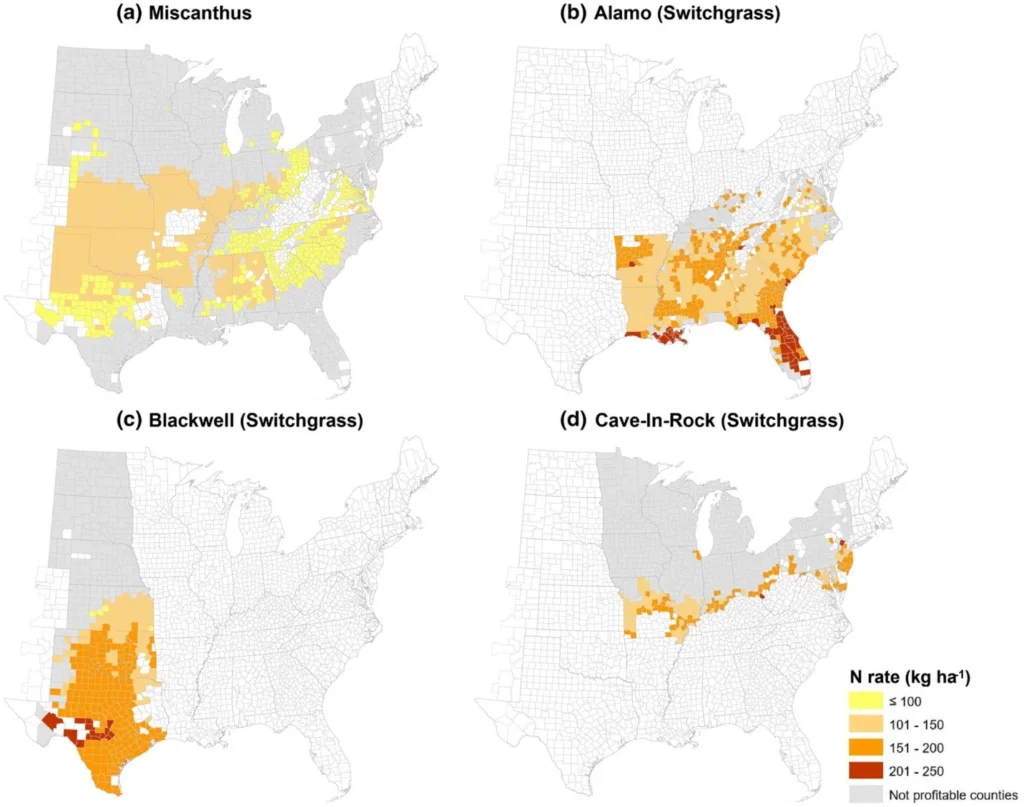Determining Spatially Varying Profit-Maximizing Management Practices for Miscanthus and Switchgrass Production in the Rainfed United States
Themes: Sustainability
Keywords: Biomass Analytics, Field Data
Citation
Zhang, N., Sharma, B.P., Khanna, M. Nov. 28, 2022. “Data for ‘Determining Spatially Varying Profit-Maximizing Management Practices for Miscanthus and Switchgrass Production in the Rainfed United States.’ “ University of Illinois Urbana-Champaign. DOI: 10.13012/B2IDB-9793873_V1.
Overview

The compiled datasets include county-level variables used for simulating miscanthus and switchgrass production in 2287 counties across the rainfed U.S. including five-year (2012-16) averaged growing season degree days (GDD), five-year (2012-16) averaged growing season cumulative precipitation, National Commodity Crop Productivity Index (NCCPI) values, regional dummies (only for miscanthus), the regional-level random effect of the yield response function, N price, land cash rent, the first year fixed cost (only for switchgrass), and separate datasets for simulating an alternative model assuming a constant N rate.
The GAMS codes are used to run the simulation to obtain the main results including the age-varying profit-maximizing N rate, biomass yields, and annual profits for miscanthus and switchgrass production across counties in the rainfed U.S. The STATA codes are used to merge and analyze simulation results and create summary statistics tables and key figures.